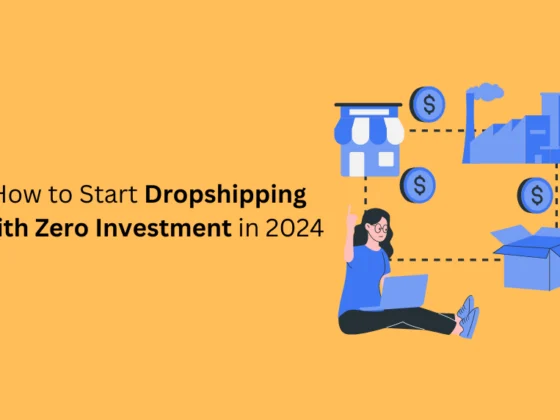Modular Commerce Vs Headless Commerce: What Is It?
When your company achieves a certain level of maturity or sophistication, every little detail counts. At this point, you may need to abandon the prefabricated. Easily accessible solutions you have previously relied upon in favor of creating an e-commerce or composable commerce system that best meets your specific needs. It allows you to easily alter it as they evolve. Currently, the most important thing is to implement a modular commerce approach.
Modular commerce is the process of constructing an online store using a range of third-party components. Ecommerce enterprises that adopt a modular approach can tailor their businesses to granular details and remain flexible in response to changing market conditions. This post will provide you with more information about the modular approach to commerce. Along with explains why it can be a good fit for your company.
What is modular commerce?
The development methodology called modular commerce relies on a detachable architecture. Instead of developers utilizing pre-packaged solutions that need configuration to function properly, they “assemble” their preferred best-of-breed tools into a unique e-commerce experience. For instance, you can designate one vendor to handle payments, another to oversee your e-commerce store’s back-end operations, and still another to serve as your content management system.
The development methodology named modular commerce relies on a foundation of composable architecture. Instead of depending on pre-packaged solutions that need configuration to operate smoothly together, developers “assemble” their preferred best-of-breed technologies to create a distinctive ecommerce experience. For instance, one vendor may manage the back-end operations of your e-commerce shop, another may handle payments, and a third may serve as your content management system.
Modular commerce vs. headless commerce:
While people sometimes interchange headless commerce and modular commerce, they possess distinct differences. Headless solutions earn the label “headless” because they separate the front end. while modular techniques earn the title “modular” because they offer more options for swapping components between the front and back ends beyond just the initial separation.
People frequently confuse modular commerce and headless commerce despite their clear distinctions. Modular systems earn their name by offering more options for swapping components between the front and back ends compared to headless solutions, which earn their label simply because they divide the front end.
Considering these methods on a spectrum is helpful. In a traditional monolithic system, every part is tightly interconnected, offering minimal flexibility. Conversely, Shopify provides businesses with an e-commerce platform that they can customize and expand upon in a modular way. Shopify can be configured to meet your business needs and is designed to be composable. Retailers have the option to integrate with their preferred third-party technologies, such as their OMS, ERP, and PIM, in addition to using our range of best-in-class commerce solutions.
Moving up the spectrum are systems built on microservices. which we’ll discuss in more detail in a later section. These systems offer even greater flexibility. While they come with complexity costs that should be taken into account.
Modular commerce vs. microservices
Systems based on microservices. which we’ll discuss in more detail in a later section, offer even greater flexibility. Whereas come with costs associated with complexity that must be taken into account.
Retailers who adopt a modular strategy to e-commerce benefit from a certain level of stability and flexibility. With modular commerce, every component provides:
- Autonomy, which allows businesses to readily alter components
- Orchestration, which allows businesses to plan how each part works together
- discovery, which enables businesses to efficiently install, monitor, and manage system components simultaneously and independently of one another.
5 benefits of Modular Commerce
- Flexibility
- Speed-to-market
- Scalability
- Efficiency
- Improved customer experience
When retailers consider modular commerce for e-commerce, they’re often looking to unlock flexibility to swap out components as needed and ultimately choose the best tool for each use case.
In this section, we’ll cover the above five benefits.
-
Flexibility
Businesses can construct and develop a unique tech stack that meets their present needs. Through modular commerce, all without being restricted to a single approach. Companies can choose the optimal solution for each problem by combining various tools and technologies. Such as front-end and back-end components. Instead of limiting you to one platform, a modular approach empowers you to choose the best software components for your company, both now and in the future.
-
Speed-to-market
Customer behaviour and market expectations are subject to quick and frequently unpredictable changes. Companies can test new concepts with a modular approach without having to commit large amounts of resources to development. For instance, businesses can introduce new features as stand-alone modules, promote them to a targeted audience, and then evaluate the features’ effectiveness before determining whether to completely integrate them into the platform as a whole.
-
Scalability
Businesses can add modules to their tech stack to address changes in user behavior, such as incorporating AR shopping features or more advanced search functionality, and they can also replace modules with ones that provide more scalability and reliability if the business is attracting more customers.
-
Efficiency
Companies can add modules to their tech stack to adapt to changes in user behaviour, like adding tools for AR purchasing or more sophisticated search capabilities. If their firm is growing, they can also swap out existing modules for ones that offer more scalability and dependability.
-
Improved customer experience
Companies can update outdated modules with new ones that offer greater scalability and dependability if their firm is growing. They can also add modules to their tech stack to accommodate changes in user behaviour, such as adding AR shopping tools or more sophisticated search functions.
Because it allows them to add distinct modules for different channels, e-commerce enterprises that work across several sales channels can benefit greatly from modularity. For example, they can add different features and upgrades to the website vs. the mobile app.
Read More
USE AI TOOLS TO ENHANCE YOUR SHOPIFY STORE
GETTING HELPFUL INFORMATION FROM “FAIRING”: – POST-PURCHASE SURVEYS APP
SUSTAINING COMPETITIVE ADVANTAGE OF E-COMMERCE WITH GROWAVE: LOYALTY & WISHLIST APP
BOOST YOUR SHOPIFY STORE: CONNECTING WITH SOCIAL-MEDIA
BEST E-COMMERCE PLATFORM FOR ONLINE STORE
Is Modular commerce a good fit for enterprise commerce?
Businesses used to choose modular commerce because it was flexible. Global businesses, however, want a platform that can grow with them. It provider that offers them as much (or as little) freedom as their firm requires, according to study.
Only 27% of global enterprise executives questioned by IDC have a fully headless and modular setup. Utilizing a combination of apps and modules from various vendors, and 29% have an all-in-one full-stack platform. Of these, 45% have a composable front-end and a full-stack back-end. Leaders are therefore discovering the ideal balance of optionality.
By using a mixed model, businesses can achieve various benefits. Such as cost-effectiveness, improved customer experience, and a quicker time to market without depending entirely on internal knowledge. Furthermore, cost-effectiveness is critical. since, on average, 91 percent of businesses switching to headless, hybrid or full-stack, a low total cost of ownership is crucial.
Having a business commerce platform that offers you complete freedom in development without needing the advanced technological expertise necessary for fully headless and modular commerce platforms is excellent. Shopify offers three implementations – headless, composable, and full-stack solutions – designed to reduce unnecessary complexity, accelerate time to market, and offer flexibility in adapting your stack to your company’s needs.










